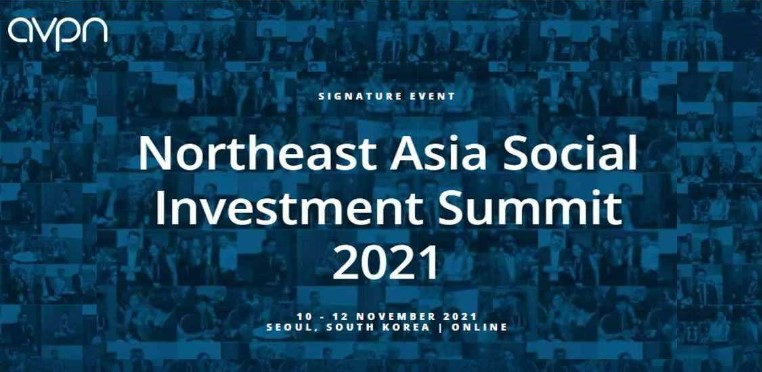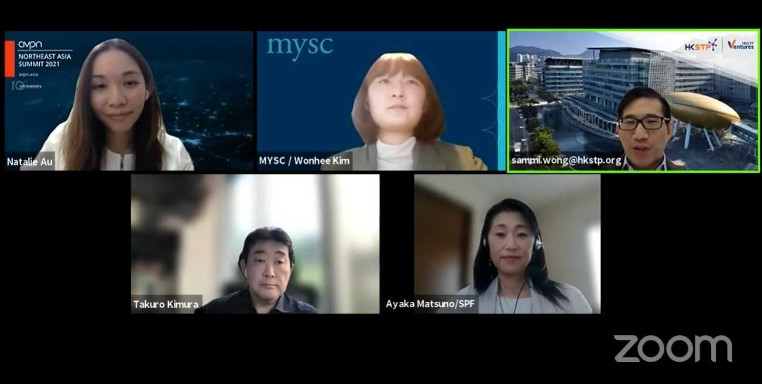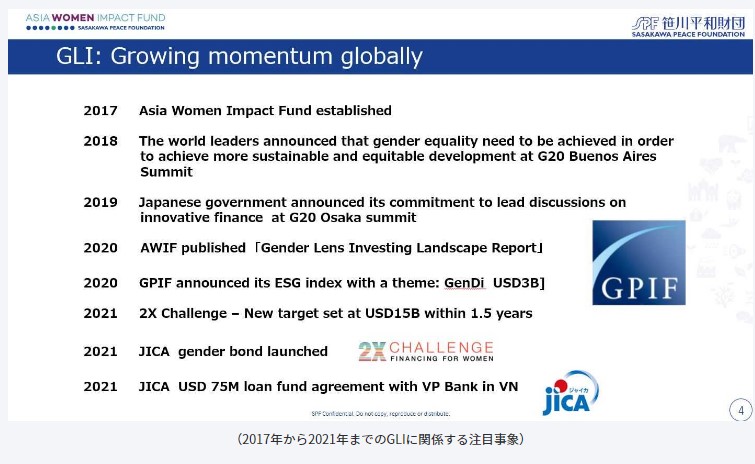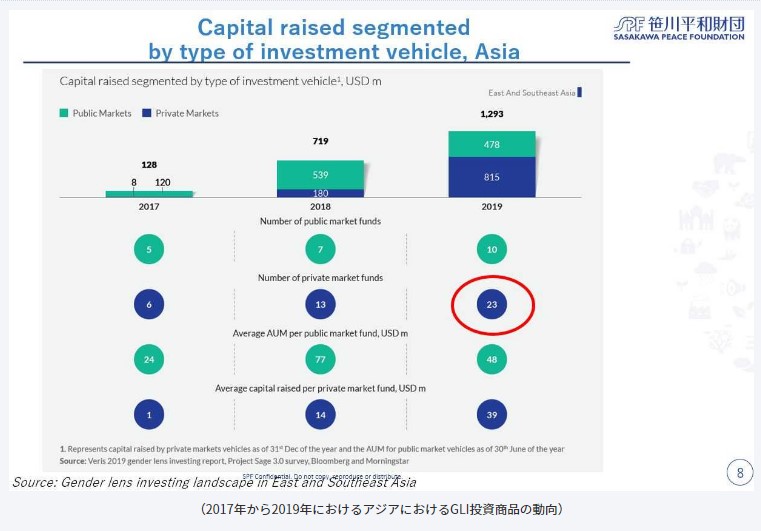In the next question, Ms. Au asked each of the speakers for best practices that would help them get started with GLI.
Ms. Matsuno introduced the Gender Lens Investment (GLI) Fellowship Program, which is being implemented this year in collaboration with AVPN and Investing in Women, an initiative of the Australian government. She stated that while the first round of the program will end in December 2021, a second round is scheduled for the next year. In addition, she introduced the biennial “Gender Smart Investing Summit,” which provides an opportunity for investors and GLI focused funds to meet. Similarly, the “Capital Connect” program, which is part of the summit. This program provides an opportunity to bring together investors and GLI focused funds.
She further mentioned that some funds started to consider paying attention to inter-sectionality of variety of social issues and gender issues. It means that addressing gender inequality does not necessarily be the main objective of a fund. Rather, it can be a secondary objective. Those funds widen their scopes to include funding that focus on gender perspectives in the context of climate change and other social challenges that overlap with other issues. Additionally, Ms. Matsuno said that the GLI is just one tool to help the foundation to achieve its goal of bringing about positive outcomes to women and girls in Asia.
Ms. Au then mentioned that WoWE is bringing together data collectors, index creators, financial product developers, asset managers, and others to develop GLI financial products. She inquired about Kimura's recommendations for joint development of GLI products in public markets. She also sought for advice for investors who wish to incorporate a gender perspective in their public market portfolios. Mr. Kimura talked about a prototyping session conducted by WoWE together with UN Women in 2019. The session was attended by the World Bank, Equileap (a gender-focused data agency), financial institutions, and other ecosystem players. This session clarified how the bond market is lacking a gender-focused sovereign bond rating. This realization led him to work with the University of Pennsylvania on a study to establish an independent index or gender bond or social bond KPI(Key Performance Indicators). He suggested that this method of collaborating with many actors to generate ideas and solutions could be considered an excellent practice for GLI implementation. His advice to investors was to think about gender from an integrated and inclusive perspective.
Ms. Au then asked Mr. Wong about the types of stakeholders he has worked with in Hong Kong. Mr. Wong said that he has worked with variety of actors, including researchers, governments, entrepreneurs, and venture capitalists for advice and support. In addition, Hong Kong's Innovation and Technology Committee currently has a female chair. HKSTP Ventures' investment in four female entrepreneurs, which is a tailwind for the GLI, demonstrates that the number of women entrepreneurs in Asia is growing, he said. Mr. Wong also mentioned that the number of prominent female investors is on the rise, and that these positive developments inspire him to collaborate with a variety of stakeholders, emphasizing his optimism for GLI's future growth.
Finally, Ms. Au broached the subject of the Korean market, inquiring Ms. Kim about MYSC's GLI efforts and relevant case studies. Ms. Kim first stated that MYSC is not just an investor, but a "system maker." She noted that it is necessary to change the perspective of accelerators, incubators, and other intermediary organizations that design funding programs, and that is why MYSC is developing programs to help intermediary organizations incorporate gender perspective into their respective projects. She finds it problematic that the investment process to date has relied heavily on the judgment and priorities of investors. She is aiming to ensure that all investment procedures are gender-sensitive by educating evaluators and investors about the gender perspective. Finally, Ms. Au asked if the most innovative approach would be to examine one's own gender perspective and make small changes from the inside, such as forming a gender committee within the company, surveying stakeholders, and organizing group talks.
At the end of the Q&A session, Ms. Au posed several questions about GLI’s future developments in Northeast Asia, as well as about GLI indicators and evaluation tools. GLI has potential to be a powerful tool for not only channeling funds toward gender equality and women's empowerment, but also for assisting investors in recognizing potential value and risk, and making smarter investment decisions. The Sasakawa Peace Foundation will continue to share our learning gained by practicing GLI so that many investors would support and apply a gender lens to their investment practices in Northeast Asia.




